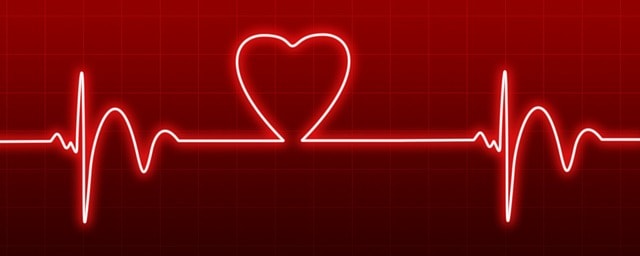Importance of Finding Your Maximum Heart Rate
To do workouts as effective as possible you should be able to find you maximum heart rate and monitor if you train to hard or can give it a little extra. Your highest heart rate number is the same as how many beats your heart can take in a minute when working hard. Many training watches and some fitness bands let you measure this nowadays with a heart rate sensor you strap to your chest. It can be very useful for your training progress to take this seriously, so give it a minute and read this article to learn the basics.
This is important for both aerobic- and anaerobic training. Your heart rate is an excellent measurement for intensity – how hard you are working. You can compare it to when a person do weight lifting knows exactly how many kilos he or she can lift, but instead in an aerobics it’s how many beats your heart can do in a minute.
So what is aerobic training? Aerobic training, or cardio training, is typically exercises that last for a longer period of time with lower intensity like running, swimming and cycling. Walking also counts as aerobic training.

Aaerobic cycling activity (Image: Pixabay)
Anaerobic training has on the contrary much higher intensity for a shorter period of time, like short distance running and strength training.
We will look at different methods and ways to calculate your maximum heart rate and how to use the Training Zone Chart to clarify which heart rate you should target on your workouts.
=> Previous Post: Garmin VivoFit Fitness Band <=
Determine Maximum Heart Rate
There are several methods people use to determine maximum heart rate. They vary from easy calculated estimates to advanced measurements by cardiologist with specialized machines that can monitor the oxygen extraction from your blood.
Usually for your daily workout the simple and traditional estimate may be enough even if it’s not perfectly accurate. When you become more serious you may update your calculations and methods a bit.

Heart Beat (Image: Pixabay)
Here are the most common methods to determine maximum heart rate:
Traditional Method
The simplest and easiest method of finding your highest heart rate number for most people is to subtract your age from the number 220.
I’m 34 years old so in my example HRmax = 220 – 34 = 186 bpm.
‘Bmp’ is short for ‘beats per minute’. It is not an accurate number and some people don’t recommend using this formula anymore but I think its ok. There are numerous tweaks to this formula and some of them listed below.
Latest Recommended Formula For Women
In 2010 research performed by a Dr. Martha Gulati found out that the male-based 220-formula doesn’t suit women. It overestimates the heart rate and after testing thousands of women it was clear that women should use the formula:
HRmax = 206 – (0.88 x Age)
If I’dd been a woman my max heart rate would be: 206 – (0.88 x 34) = 206 – 29.92 = 176 bpm.
So you see it’s a slight difference between the traditional method and this one.
Gender Adjustments
There are several other adjustments to the formula, but I don’t think it’s necessary to list them all here. The only two I want to mention is the gender adjusted formulas for men and women based on the original 220-formula:
Male adjusted: 202 – (0.55 x Age)
In my case (34 years old) gives the max heart rate number of 183 bpm.
Female adjusted: 216 – (1.09 x Age)
Which gives me (if I was a woman aged 34) the max heart rate of 179 bpm.
There are many other formulas and you may ending up getting wrong results, but I don’t think it really matters if it’s not 100%. Don’t let these calculations and math lectures stop you from running and training.
Anyway is the best way is to actually perform a tough physical running test and measure your personal maximum heart rate with a monitoring device. There are many ways to do this like running hard for 30 minutes or running up or down steep hills. It’s also possible to do treadmill test to get your exact heart rate number.
=> Click here for my article about Do I Really Need an Activity Tracker? <=

Running (Image: Pixabay)
Training Zones
The benefit of knowing your heart rate number, and how hard your heart can be pushed, is that you can keep an eye on how tough you train. Sometimes it’s not beneficial to do workouts with a 100% effort. It’s also important to know if you are lazy and need to increase the intensity. It all depends on what your goals are – if it is to lose weight, increase your endurance or to be able to sprint just a little bit faster.
When you know what your goals are you look at the training zones chart below and find the Upper and Lower limit of your intensity.
Training Zone Chart
| Effort | Effect | Zone |
| MAX 90% -100% | Develops max performance and speed | High Intensity Zone |
| HARD 80% – 90% | Increase performance capacity | Anaerobic Zone |
| MODERATE 70% – 80% | Improves aerobic fitness and heart | Aerobic Zone |
| LIGHT 60% – 70% | Improves basic endurance and for fat burning | Weight control Zone |
| VERY LIGHT 50% – 60% | Improves your overall health, recovery and warm up | Fat Burning Zone |
Let’s do an example.
I have found out, being a 34 year old male, that my largest heart rate number is 186 based on the simple 220-formula mentioned earlier.
Let’s say I want to do normal aerobic fitness training to develop my cardio. According to the chart my heart rate should not exceed 80% of my maximum heart rate and not fall below 70%. To calculate the upper and lower limits you simply calculate as following:
Upper Limit which is 80%: 186 x 0.8 = 149 bpm
Lower Limit which is 70%: 186 x 0.7 = 130 bpm
In layman’s terms: If I’m above 149 I need to slow down a bit and below 130 I need to speed it up.
So with the knowledge of calculating these upper and lower numbers it is piece of cake to monitor your intensity during training so you make sure you don’t train to hard or too low. You simply want to perform between this numbers to get the most effective workout on a longer period of time.
And how do you measure heart rate? With a Heart Rate Monitor of course.
Tools to measure your Heart Rate
As mentioned briefly in the start of this article you can use a Heart Rate Monitor (HRM) to measure this. Some new fitness bands also have this possibility but often they too need to be paired up with a sensor you strap around your chest.
=> Polar Loop – Activity Tracker with HR Monitor <=
=> Garmin VivoFit – Fitness Band with HR Monitor <=
You can easily keep an eye on your training watch to see if you are inside your training zone.
You could definitely make your training smoother with heart rate monitor. When you have decided that you want to purchase a heart monitor at the retailer it can be difficult to choose. If you are looking for good choices for women I have compared the ones I think it’s best based on reviews, functionality and price.
Good luck choosing. If you have further questions or comments leave them below in the comments section.

